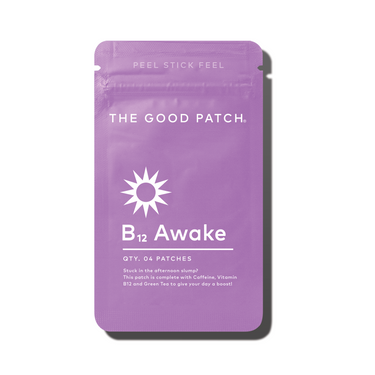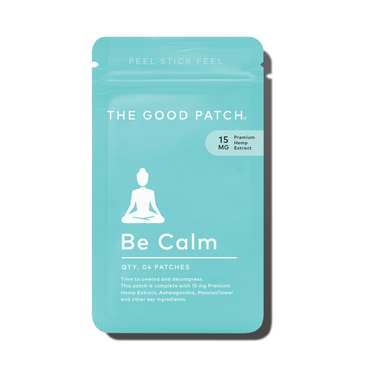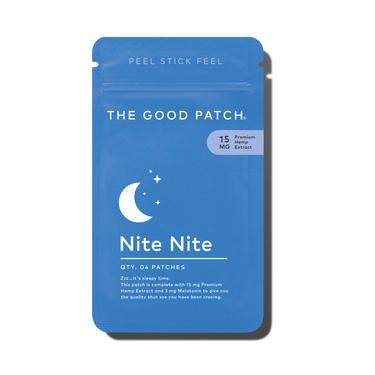Ah, daylight saving time. It’s that magical moment each year when we “spring forward” or “fall back,” and our internal clocks go a little haywire.
At The Good Patch, we understand the struggle. One hour might not seem like much, but it can feel like a mini jet lag every time our clocks jump forward or fall back.
Whether you love the extra hour of sunlight or dread the disruption to your sleep cycle, we're here to help you navigate this transition like a pro. So, let's dive into the world of circadian rhythms and find ways to embrace the change, making sure your body and mind stay in harmony with the tick-tock of daylight saving time.
What Is the Circadian Rhythm?
Daylight saving time doesn't just tweak our wall clocks. It nudges our body’s internal clock, too.
That's where our circadian rhythm comes into play. Think of it as your body’s personal conductor, orchestrating the symphony of your sleep-wake cycle, hormone release, and even your mood.
- Natural Light and Your Body Clock: The shift in time can throw off this rhythm. Why? Because our circadian rhythm loves sunlight. It relies on daylight to tell our brains when to pump out wakefulness hormones like serotonin and when to simmer down with sleep-inducing melatonin.
- Daylight Hours and Sleep Quality: When daylight saving time rolls in, the mismatch between the clock time and the light-dark cycle can disrupt our sleep patterns. You might find yourself tossing and turning when you should be snoozing or feeling sleepy when it’s time to be alert.
Understanding this natural rhythm is the first step in helping your body adjust to the time change. It's about working with your body's love for light, not against it.
How Can I Prepare for Daylight Savings?
Adjusting to daylight saving time is a bit like prepping for a smooth take-off. Here are some tips to help you transition without the jet lag vibes:
- Gradual Time Shift: In the week leading up to the change, tweak your bedtime and wake-up time. Shift them by 15-20 minutes each day to align with the new time zone. Slow and steady wins the race here.
- Light Exposure Strategy: Manipulate light exposure to your advantage. In the mornings, soak in that early daylight to signal your brain it's time to wake up. In the evenings, dim the lights and limit screen time to cue your body that bedtime is near.
- Mornings With the B12 Awake Patch: For an extra kick to align with your new wake-up time, try incorporating our caffeine patches into your morning routine. Infused with Vitamin B12, it’s a subtle nudge to help your body find its new rhythm. It's about giving you that gentle life, not jolting you awake.
Remember, it's not about a drastic overhaul but making small, intentional changes to ease into the new time frame.
Optimizing Your Sleep Environment
When it comes to adjusting to daylight saving time, your bedroom is your sanctuary. Creating an environment that whispers “sleep” can be a game-changer.
Here's how to set the stage for better sleep:
- Blue Light Beware: In the hour before bed, limit exposure to electronic devices. The blue light emitted can trick your brain into thinking it’s daytime, delaying the release of melatonin. Opt for a book or a non-screen activity to wind down.
- The Power of Darkness: Consider using a sleep mask to block out any stray light. It’s like telling your brain, “Okay, it’s really nighttime now,” helping you drift off faster.
- A Calming Bedtime Routine: Establish a soothing pre-sleep ritual. This might include a warm bath, gentle stretching, or meditation. The key is consistency; your brain loves a good routine.
To elevate your sleep environment, try our melatonin patches. Infused with Melatonin, Hops, and Valerian Root, it’s designed to support your journey to dreamland. Just peel, stick, and let the patch work its magic, gently lulling you into a restful night’s sleep.
Dietary Adjustments and Exercise
Adjusting your diet and exercise routine can also help your body sync up with daylight saving time.
Here’s how to use food and fitness to fine-tune your internal clock:
- Regular Mealtimes: Keep your meal times consistent. Eating at regular intervals helps regulate your body’s clock. A well-timed dinner can signal your body that it’s nearing bedtime, aiding in the production of sleep-friendly hormones.
- Exercise and Daylight Exposure: Incorporate physical activity into your day, preferably in natural daylight. A morning jog or an afternoon walk can reinforce your body’s circadian rhythms, promoting better sleep at night.
- Steer Clear of Stimulants: In the evening, avoid caffeine and heavy meals. They can rev up your metabolism and make it harder to wind down.
Your body loves rhythm, whether it’s in the form of consistent meal times or a regular exercise routine. Staying active and eating right are key players in helping your body adjust to the time shift.
Managing Sleep Patterns Post-Time Change
Adapting to daylight saving time doesn’t end the morning after the clocks change. Maintaining good sleep hygiene is crucial for long-term adjustment.
Here are some strategies to help you manage:
- Stick to Your Sleep Schedule: Even after the time change, keep to your regular sleep and wake times. Consistency is key in reinforcing your body's sleep-wake cycle.
- Combating Sleep Deprivation: If you're feeling the effects of lost sleep, short naps (20-30 minutes) can be beneficial. They can help refresh your mind without affecting your nighttime sleep.
- Seeking Expert Advice: If you’re struggling with significant sleep issues post-time change, it might be time to consult a sleep specialist. Persistent sleep disruption may need professional intervention.
At the end of the day, it’s about listening to your body and responding to its needs. Good sleep hygiene is a journey — not just a one-time adjustment.
Long-Term Strategies for Better Sleep
Long-term, quality sleep hinges on more than just reacting to daylight saving time.
Here’s how to ensure consistently restful nights:
- Consistent Sleep Schedule: Aim to go to bed and wake up at the same time daily. This regularity strengthens your circadian rhythm, leading to better sleep.
- Stress Management:Stress can be a major sleep disruptor. Incorporate stress-reducing activities into your routine. Consider using our calming patches, infused with Ashwagandha and Passionflower, for those extra stressful days. It's a subtle yet effective way to invite calm vibes into your day.
- Understanding Melatonin and Serotonin: These hormones play vital roles in sleep. Exposure to natural light during the day boosts serotonin, while darkness triggers melatonin production. Understanding and utilizing this natural rhythm can help enhance your sleep quality.
The Bottom Line
At The Good Patch, we're all about embracing change — even when it's as tricky as daylight saving time. Remember, it's not just about adjusting your clocks but tuning in to your body's natural rhythms.
Whether it's finding a gentle lift with our B12 Awake Patch or drifting into dreamland with the help of our Dream Patch, we're here to support your transition.
Daylight saving time doesn't have to be a hurdle. With the right approach, it's just another opportunity to align with the natural ebb and flow of life. Here's to longer days, brighter mornings, and peaceful nights — no matter what the clock says.
Sources:
Physiology, Circadian Rhythm - StatPearls | NCBI Bookshelf
How to Build a Better Bedtime Routine for Adults | Sleep Foundation
Daylight Saving Time - Sleep Education | AASM
Blue Light: What It Is and How It Affects Sleep | Sleep Foundation







